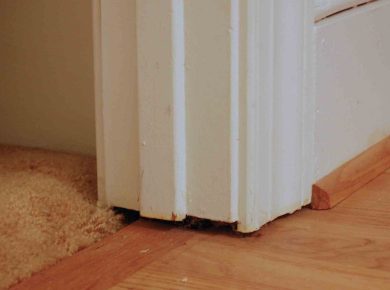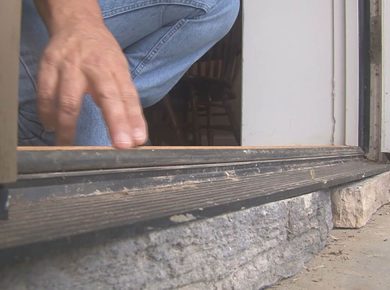Noisy ceiling fan bearings – troubleshooting tips..
Did you notice the ceiling fan making a humming noise when you’re not using it? Did you ever think that ceiling fans are noisy?
Well, we’re more than happy to tell you why ceiling fans make noise and how noisy they can be.
But before we get into that, let’s talk about noisy ceiling fan bearings and how to fix noisy ceiling fan bearings.
Is a noisy ceiling fan dangerous?
If you have noticed that your ceiling fan is making a lot of noise, it is important to check the bearings first. If the bearings are dirty or if there is debris in them, the fan will likely make a lot of noise.
If the bearings are bad, the fan won’t operate properly and will make a lot of noise. If you have tried cleaning the bearings and the fan still makes a lot of noise, it might be time to replace the entire fan assembly.
However, if you have replaced the bearings but the fan is still making a lot of noise, it might be necessary to replace the motor as well. When checking for noisy ceiling fans, it’s important to make sure they are operating properly and not making excessive noise.
Why does my ceiling fan make noise?

After several years of installation, most traditional ceiling fans will make rattling, squeaking, grinding, and scraping noises.
This is frequently a signal of neglect or simply wear and tear. To make sure that it is not a safety risk in your home, you want to keep an eye on the fan.
Here’s why your ceiling fan is making a squeaky sound:
Dirty or worn-out bearings
If you are hearing noise coming from your ceiling fan, it may be coming from the bearings. These small ball-shaped parts help spin the blades and motor of the fan. Over time, these bearings can become dirty or worn out, leading to noise.
To determine whether your bearings are causing the noise, try to identify the source of the noise. If the noise is coming from the blades or motor, then the bearings may be causing the problem.
If the noise is coming from the fan housing, then it may be caused by a faulty mount or seal. If cleaning and lubricating your ceiling fan’s bearings fixes the problem, then it’s likely that they are to blame.
If you are hearing a noise from your fan and are not sure if they are causing it, try moving them around to see if that helps reduce or eliminate the noise.
Besides cleaning and lubricating them, you can also replace them if they are worn out or damaged. This will ensure that your ceiling fan is operating at its peak efficiency and providing you with reliable airflow.
Loose Screws
Ceiling fan bearings can become loose over time, causing noise. This noise can be caused by the friction between the fan blade and the bearing or from the vibration of the blade.
To fix this noise, you need to tighten the screws that hold the fan blades in place. If these screws are loose, try lubricating them with light oil or grease.
After trying these methods, if the screws are still loose after a thorough cleaning, then you may need to replace the entire fan bearing assembly.
If you’re having trouble figuring out how to properly install ceiling fan blades, take some time to learn more about it and consult with a professional.
Ceiling fan mount
Ceiling fans are often installed in high-trapport areas, such as bedrooms and living rooms.
They can make noise due to their blades moving around in the wind. If the fan mount on your ceiling fan is loose or not properly installed, the fan will vibrate and create noise.
Worn or loose bearings in the motor can also cause noise from your fan. It is important to ensure that the mount is secure to reduce or stop the noise.
If you are experiencing ceiling fan noise, check for loose screws, frayed wires, and worn bearings. Replace or tighten the mount as necessary to improve airflow and reduce noise.
Off-balance blades
Off-balance blades in ceiling fan can cause excessive noise. The blades may be out of balance due to wear or damage, leading to wobbling and rattling.
To fix the blade balance, simply adjust the blade positions until the fan is smooth and steady. If the fan isn’t making noise but the blades are still off-balance, it may be time for a new fan motor.
Fans with noisy bearings often have motors that need to be replaced. If you’re experiencing noise issues with your ceiling fan, fix it immediately by adjusting the blade balance and checking for loose screws or worn bearings.
Loose lighting fixtures
Loose lighting fixtures can cause your ceiling fan to make noise. If the loose light fixture does not affect other parts of your house, it may be due to loose wiring in the ceiling or sub-flooring. In this case, you may need to call an electrician to repair or replace the wiring.
If the loose light fixture does affect other parts of your house, such as another light fixture or light switch, it is likely that the issue is with the wiring. To fix this problem, you will need to contact an electrician to repair or replace the wiring.
Dimmer Switches
If your ceiling fan bearings are noisy, they could be a sign that they need cleaning or lubrication.
Ceiling fan bearings can become noisy over time if they are not properly maintained. This problem can be solved by replacing the bearings and/or the switch that controls the ceiling fan.
If you want to fix a noisy ceiling fan, you will need to replace the bearings and/or the switch.
To fix a noisy dimmer switch, you will need to replace the wiring or the switch itself. Both of these problems can be easily fixed with a little care and attention from you or from an experienced electrician.
Faulty capacitors
If your ceiling fan is making noise, it could mean that there’s a problem with one of the capacitors in the fan.
These small electrical components store energy for a short period of time and can fail due to a variety of causes, including corrosion or overuse.
If your ceiling fan has a capacitor failure, it will most likely make noise when the fan is operating.
To troubleshoot this problem and fix it, you’ll need to replace the capacitor. All ceiling fans use capacitors to store and discharge electrical energy, so if yours is making noise and not working as expected, it could be due to a faulty capacitor.
Faulty receiver
A noisy ceiling fan can be caused by a number of different problems. The most common problem is a faulty receiver in the fan.
If you hear noise coming from your ceiling fan when it is turned on, but not when it is turned off, there is likely a problem with its receiver. In this case, the receiver needs to be replaced to fix the noise problem.
Other common causes of noise in ceiling fans include worn or defective bearings, clogged blades, and broken or damaged chains.
If you are experiencing noisy ceiling fans, look for any obvious signs that point to a specific problem with your fan.
These may include loose screws or worn or damaged blades. If you are still unable to fix your noisy ceiling fan, consider replacing it with one that is quieter or more energy-efficient.
How to Fix Noisy Ceiling Fan Bearings

You can lubricate the bearings in your ceiling fan’s motor if you believe that the humming noise is caused by them being worn out.
The issue is that certain kinds of ceiling fans have an oil hole, whereas others do not, and must be taken down from the ceiling to access the sealed bearings.
For the steps below, you’ll want to properly detach your ceiling fan and lubricate its fan bearings:
1. Turn off the electricity
If the ceiling fan is making noise, it may be due to one of several reasons. First, if the bearings are moving and making noise, chances are that the fan blade is not turning.
To check this, turn off the fan and wait a few minutes to see if the noise stops. If the noise persists, it may be caused by a worn or broken bearing.
2. Detach the ceiling fan blades
If you notice that your ceiling fan is making a lot of noise, there are a few things you can do to fix the issue.
First, you should check to see if the bearings are working properly by checking for movement and noise. If the bearings are noisy, you may need to replace them.
However, if the blades are not moving, you can try detaching the blades and cleaning them using a damp cloth. If that does not work, you may need to replace the entire assembly.
If you are experiencing issues with your ceiling fan, it is best to take it down and have a look at it closely.
By detaching the blades and checking their position and function carefully, you should be able to determine the cause of the noise and fix it quickly and easily.
3. Remove the ceiling fan motor
If your ceiling fan is making a noise, there may be something wrong with the bearings. To fix the noise, you must first remove the motor from the ceiling fan.
After the motor is removed, you can test the bearings to see if they are causing the noise. If the bearings are causing the noise, you will need to replace them.
However, if the noise is due to other factors, such as loose wires or worn out fan blades, you may just have to lubricate or upgrade your fan blade or switch.
4. Disconnect the wires
If you are experiencing a noisy ceiling fan, it may be due to the bearings. If your fan is making a noise, it could be because of the bearings. To fix the noisy bearings, you will need to dissemble the fan and replace the bearings.
There are four main types of bearings: ball, cage, thrust, and hybrid. Each type of bearing has its own unique noise level and repair procedure. So it can be helpful to identify which Bearing is causing the noise.
Once you have identified the Bearing that is causing the noise, you can replace it with a new one. By taking apart your ceiling fan and replacing the bearings, you can reduce the noise and improve its performance over time.
5. Lubricate the Motor
If ceiling fan bearings are noisy, there are a few possible causes. Some ceiling fan bearings are lubricated with oil, while others are not.
If lubrication does not solve the noise, try to adjust the blade alignment or replace the bearings. If adjustments still fail to reduce the noise, it is likely that the motor need replacement.
If you are unable to solve the noise problem with lubrication and adjustment, look into buying a new fan motor.
These can be expensive and often require extensive work to install; instead, consider buying a new fan if noise is preventing you from enjoying your ceiling fan.
Also read: How to Oil a Ceiling Fan Without Taking It Down
6. Reassemble the ceiling fan
If your ceiling fan is making a lot of noise, there may be problems with the bearings. Reassembling the fan can fix the issue and restore quiet operation.
First, test the fan by rotating the blades. If the blades rotate freely, then the bearing is likely good and not causing the noise. If the blade do not rotate freely, then the bearing may be worn and needs to be replaced.
You can purchase replacement bearing kits that contain all of the needed parts to replace a noisy ceiling fan bearing in just a few minutes.
7. Test out the ceiling fan
If the bearings are making too much noise, there are a few things you can try to fix the issue. First, you can test the ceiling fan by manually spinning the blade or hub.
If the noise is coming from the fan itself, not from the bearings, you may need to replace the fan motor.
Alternatively, if the noise is coming from the fan and not from the bearings, you may need to replace those components.
Other than that, cleaning and lubricating your fan regularly can help ensure it runs smoothly. Besides, keep your ceiling fan clean and dust-free to avoid friction and wear over time.
Causes of Noises from Ceiling Fans
Ceiling fan noise can be caused by a variety of factors, ranging from a motor that is not turning to a noisy blade or belt.
If you have identified the source of the noise, you can take steps to fix it.
– Rotating blades: If you hear clicking or grinding sounds, it could be the blades rotating too quickly and causing noise. This is usually a sign of an outdated or malfunctioning fan.
– Motor: If your fan is making loud noises, it could be due to a worn motor. Ensure that your fan’s blade and motor are properly lubricated and operating smoothly.
– Belt: The belt may have broken or become stretched and cause noise. Inspect the fan for signs of damage, such as frayed edges or worn belts.
– Pulley: If the fan is making unusual noises, it may be due to faulty pulleys. Check the fan for loose parts and ensure that they are properly lubricated and operating smoothly.
– Blades: If your ceiling fan blades are not properly aligned or if they are cracked, they may make noise. Re-blade your fan if necessary to fix the problem
Types of Noises from Ceiling Fans
1. Rattling Noises
There are a variety of reasons why your ceiling fan may be making a rattling noise. Some common causes of rattling ceiling fan bearings include loose or worn bearings, damaged blades, and misaligned or dirty spindles.
If you are experiencing a rattling noise from your ceiling fan, try to fix the noise yourself by cleaning the fan blade or moving the fan blade closer to the motor.
However, this may lead to further damage. Instead, contact a professional to resolve the issue. They will be able to properly diagnose and repair your ceiling fan and save it from noisy operation.
If you want to keep your ceiling fan running smoothly for years to come, ensure that it is installed and maintained properly.
Also, make sure not to over-tighten screws or use excessive force when installing the fan blade bracket. Remember: No noise, no work!
2. Rubbing Noises
Ceiling fan noise can be caused by a number of factors. The fan blades, motor, and bearings are all potential sources of noise.
When trying to determine the source of fan noise, it’s important to inspect each component closely. If the noise is persistent or severe, it may be time to replace the fan bearing.
Rubbing noises from ceiling fans can be caused by a variety of factors and can be hard to diagnose without thoroughly investigating them.
If you’re experiencing this type of noisy fan behavior, take steps to troubleshoot the problem and address any maintenance needs in order to keep your ceiling fans running smoothly.
3. Humming Noises
The humming noise from a ceiling fan could be caused by dust or debris that has gotten caught in the bearing.
The humming noise typically indicates that the fan is not rotating at its proper speed (or bearings) and is creating friction within the motor.
This can lead to noisy operation and poor efficiency. To fix this problem, you must remove the fan bearing and clean it thoroughly. If the humming noise persists even after cleaning, it may be time to replace the motor.
In some cases, the humming noise from ceiling fan may be a sign of a more serious problem such as an out-of-tolerance bearing or lubrication failure. In these cases, replacing the motor would be the most effective solution.
4. Clicking Noises
Ceeling fan bearings can make a clicking noise when they move. This noise is usually caused as a result of debris or dust particles lodged in the bearings.
If the noise persists even after cleaning and replacing the bearings, it may be time to replace the entire fan unit.
Over time, ceiling fan units can become worn out and start making this clicking noise. When a noisy ceiling fan becomes a problem, you should consider replacing it with a quieter model.
Doing so will reduce the noise and provide better airflow for your room. However, if the noise persists even after replacing the fan unit, it may be time to replace the ceiling fan itself.
5. Grinding Noises
Ceiling fan noises can be a common problem, often causing frustration and annoyance. When the fan blades rotate, they can cause noises that can be heard throughout the room.
These noisy ceiling fan problems are usually caused by the fan blade being too close to the ceiling or turning at the wrong speed.
To fix this problem, you can adjust the height of your ceiling fan or replace outdated parts with more efficient models.
You can also reduce noise from ceiling fans by using them only in certain rooms, using them in tandem with other ceiling fans, or using remote control instead of physically operating it.
By taking these steps, you can reduce noise and enjoy your ceiling fan without any issues.
Can you use WD 40 on ceiling fan bearings?
If you are having trouble with noisy ceiling fan bearings, you may want to try using the lubricant WD-40. This should help reduce noise and improve the efficiency of your ceiling fan.
You can use a rag to apply the oil to the bearing and let it sit for about 30 minutes. If the bearing still does not quiet down, it may be time for a new bearing.
If you are using a remote control, try replacing the batteries. If all else fails, you may need to replace your entire ceiling fan.
Keep in mind that ceiling fan bearings are important parts of your ceiling fan that should be serviced professionally when necessary.
Conclusion
If you’re experiencing noise from ceiling fan bearings, it’s best to check them out. If they’re not moving and they’re intact, that’s the best way to fix them. However, if there are signs of wear and tear, replacing ceiling fan bearings is a viable option. If noise persists, contact an electrician and get your ceiling fan checked out asap.





